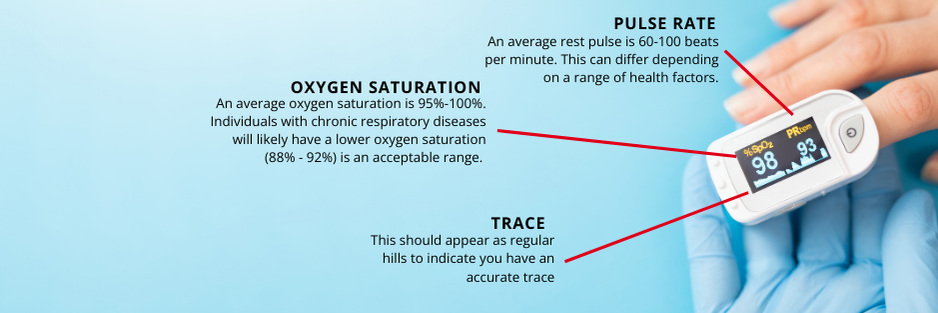
A pulse oximeter is a medical device that measures the oxygen saturation levels in your blood. The device emits a light that passes through the fingernail, skin, tissue, and blood. On the other side of the finger, a sensor detects and measures the amount of light that passes through the finger without getting absorbed by the tissue and blood. This information is used to calculate the percentage of oxygen in your blood.
Using a pulse oximeter:
It is essential to ensure that the finger being used is free of nail polish and is warm and well-perfused. Nail polish reflects the light and causes inaccurate measurements. Equally, lack of perfusion to the fingertips means there is reduced blood flow, so the reading will not accurately represent the amount of oxygen in the blood. Patients in critical conditions will not have adequate blood supply to their extremities at times and, therefore, may require a head sensor. A head sensor uses the same principle but is placed on the forehead.
If your hands are too cold, you can also place the oximeter on your toes, ears, or nose. This versatility ensures that you can always get an accurate reading, regardless of the circumstances. However, it is essential to position the internal light of the oximeter over the skin for accurate readings.
If you encounter any issues with your pulse oximeter, there are a few troubleshooting steps you can take.
- Firstly, ensure the device is calibrated correctly, and the batteries are fully charged.
- Secondly, check that the sensor is positioned correctly and that there is no ambient light interfering with the readings.
- Finally, try using a different finger or body part, and make sure to keep still during the measurement process. This focus and attention to detail will help avoid any motion artifacts and ensure accurate readings.
decoding a pulse oximeter

